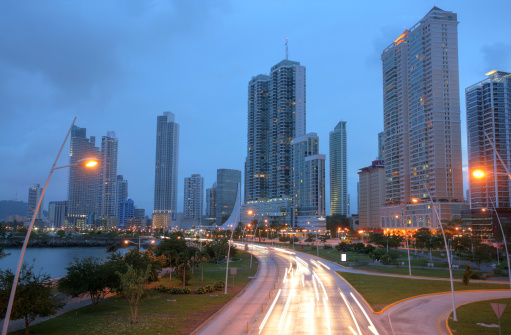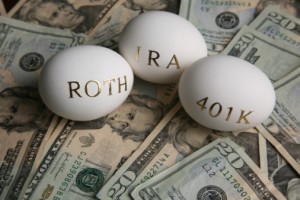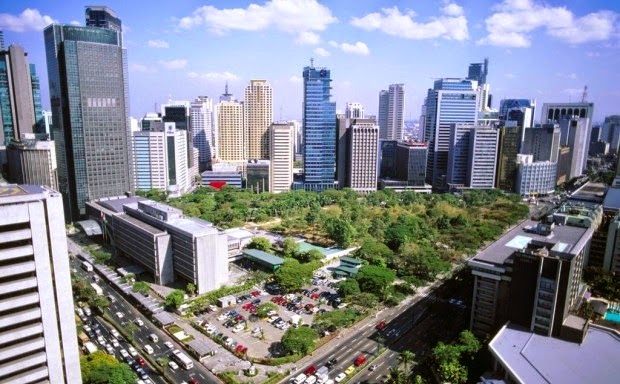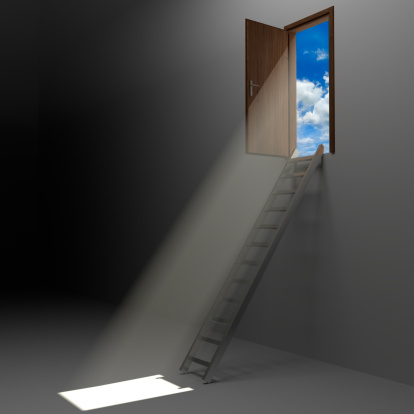Panama 2015 and Beyond
Panama 2015 looks to be a great investment with continued growth of 7%. While the tiny economy will face a number of challenges, chief among them is competition to its canal, expect solid returns to continue.
First, a brief mention of Panama’s 2015 banking sector. Significant amounts of wealth will continue to flow in to Panama as crisis hit and Venezuelans look for investments, work, shopping, and a safe haven for their cash. In fact, I expect wealth will continue to be transferred from a number of Latin American nations in the coming years. Venezuela, Colombia, and Mexico all seek safety and security in Panama.
Basically these investors are wanting the stability of a U.S. dollar based economy without the risk of putting their money in the United States. Where it was once easy for foreigners to open accounts here, FATCA has made it more risky. While information flow has been one way (in to the United States), expect that to change as our neighbors to the south get tired of the hypocrisy. Beware of this concern; capital will leave Miami for Panama in 2015. Expect this to continue in 2016.
In 2014, public investment of $19 billion was made in Panama. This is an enormous amount considering their GDP for this year will be $24 billion. Of this amount, $5.2 billion was put in to the Panama Canal.
As a result, we’ve seen an average growth rate of 8% over the last few years. It has brought about a new metro rail, a giant causeway (one of my favorite areas to hang out in Panama), and hundreds of new skyscrapers.
Now, here’s the bad news. The Panama Canal has been fraught with disputes. First, a billing problem slowed down the project by one year. The European firms were billions of dollars over budget and Panama refused to pay for the overages. Once this was settled, the workers went on strike. At the time of this writing, it is expected the project will resume within the week.
Next, there has been no urban planning in Panama. The building boom in Panama City is all about speed and graft. As a result, traffic is out of control and no parking was allotted in many areas. Just try going near the banking district on a workday.
Another urban planning issue is that many of the buildings have water flow problems. When it rains, they flood. For example, when the center piece of Trump Towers opened, rain stranded the President and those attending the grand opening festivities.
I would like to note that Panama is not a desert climate! They have two seasons: rainy and rainier. So, when urban planning fails to account for the daily downpours, there’s a problem.
Panama will continue spending big on development and improvements. For 2015, Panama will invest $3 billion and should see growth of about 7% (1% less than in previous years).
Wile I expect the economy to remain strong, I bet some real estate will lag behind. While it’s true that many international persons are flowing in to Panama, there is also a lot of capacity coming online. I look for appreciation of 5% to 8% depending on where you invest in Panama City. Focus on San Francisco (a region of Panama City) and the like for the best returns. Avoid Trump and Punta Pacifica.
I also believe the long term outlook for Panama is strong. The primary limiting factor in business growth is a lack of educated workers and English speakers. All of the new shiny towers need workers that speak English. If schools begin turning out a quality work force even faster than they do today, the sky’s the limit for Panama.
In addition to the need for more workers, there are issues surrounding politics and the Canal. The current administration, which came in to office a few months ago, is proposing price fixing for groceries. The influx of high net-worth individuals is pushing prices beyond the reach of average Panamanians and the government is considering Venezuelan type price controls.
A longer term risk factor is the Panama Canal… the pride of this nation which was returned by President Carter and signed over by President Clinton.
The current expansion is the first in over a century. The Canal opened August 15, 1914 and might be finished this year or in 2015.
Panama has upgraded its locks to allow ships carrying up to 13,000 containers. Before the upgrade, size was limited to 5,000 containers. However, the largest ships today are at 18,000 containers, and expected to reach 22,000 in the years to come.
And there is now competition to the Panama Canal. The Suez Canal in Egypt completed its expansion (the first in 145 years) and can handle ships of all sizes. Piling on, Nicaragua plans a $40 billion canal of its own. This one, funded (of course) by China, could put significant pressure on Panama’s margins because it would not be limited by locks or ship size.
The Suez Canal was a more costly route because it’s a longer journey from Circe (further south), times are changing. Significant manufacturing has moved out of China to its southern neighbors. From these ports, the Suez Canal is either more efficient, or just as long a journey, as Panama.
Like Nicaragua, the Suez Canal is at sea level. Therefore, no locks are required and any future expansion (widening) can be done more efficiently than in Panama. Expect Suez to allow for any and all cargo ships while Panama is limited to those holding 13,000 or fewer containers for decades to come.
All of this is to say that the Panama Canal will need to compete on price in the years to come. Though, I remain strong in my short term and long term outlook. I expect education to keep pace with demand and for this to push businesses like mine and your forward.
For information on moving to or incorporating in Panama, please give us a call or send an email to info@premieroffshore.com.












Leave a Reply
Want to join the discussion?Feel free to contribute!